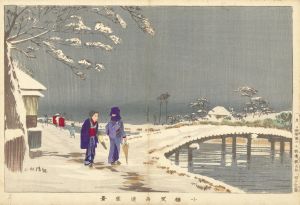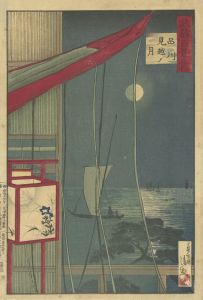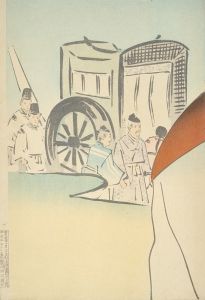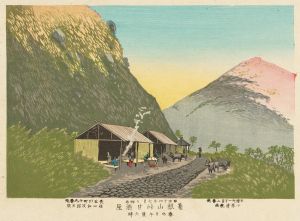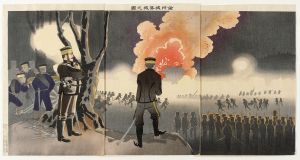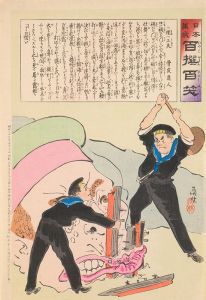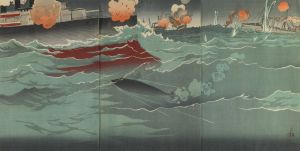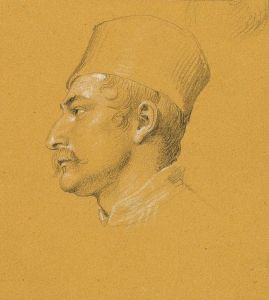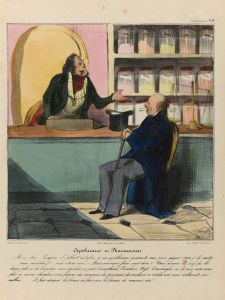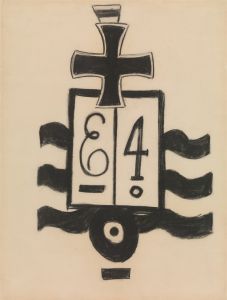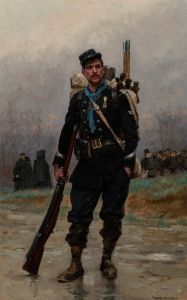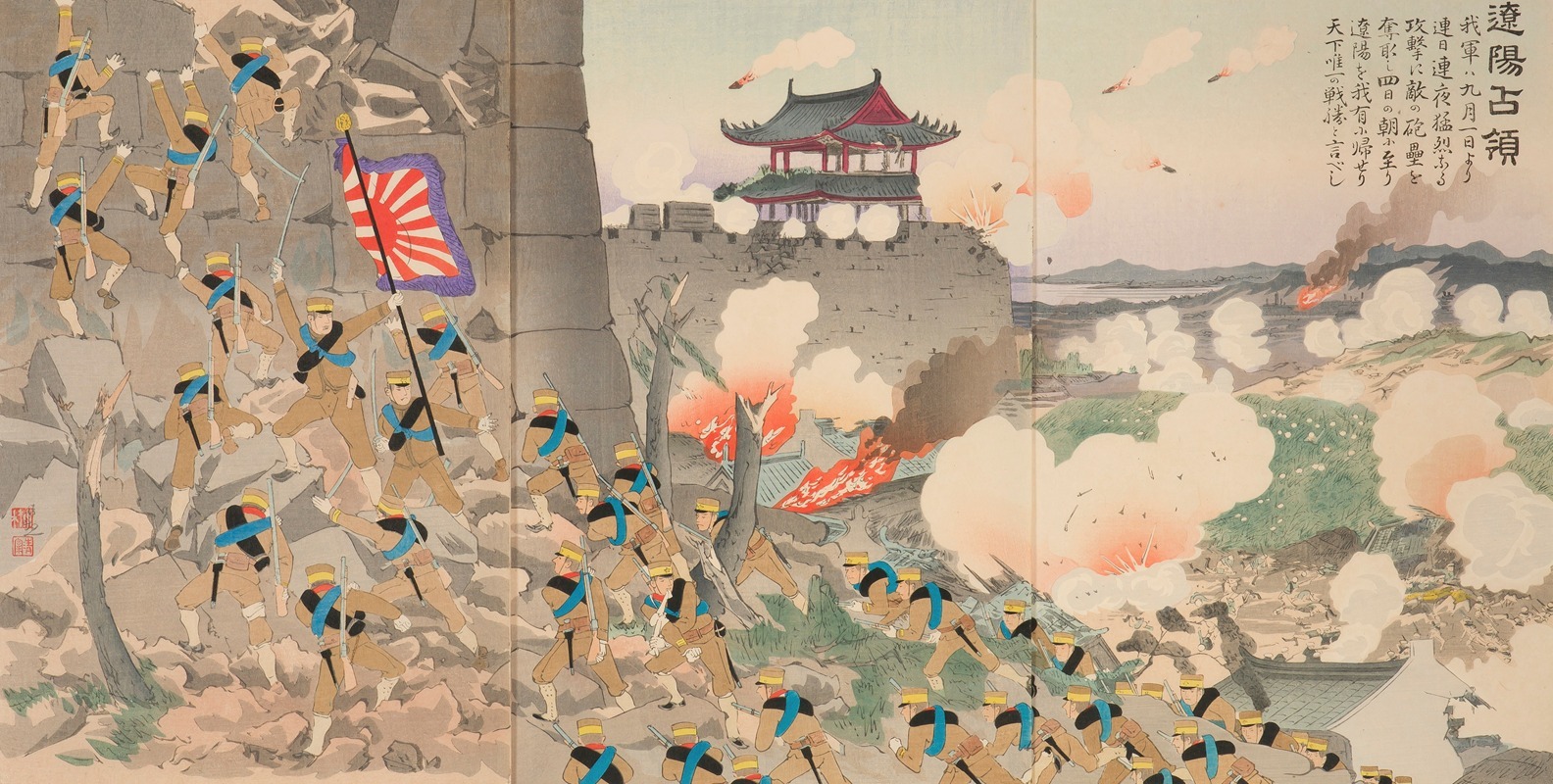
The Occupation of Liaoyang
A hand-painted replica of Kobayashi Kiyochika’s masterpiece The Occupation of Liaoyang, meticulously crafted by professional artists to capture the true essence of the original. Each piece is created with museum-quality canvas and rare mineral pigments, carefully painted by experienced artists with delicate brushstrokes and rich, layered colors to perfectly recreate the texture of the original artwork. Unlike machine-printed reproductions, this hand-painted version brings the painting to life, infused with the artist’s emotions and skill in every stroke. Whether for personal collection or home decoration, it instantly elevates the artistic atmosphere of any space.
Kobayashi Kiyochika's "The Occupation of Liaoyang" is a woodblock print created during the late 19th century, reflecting the artist's engagement with historical events and his mastery of ukiyo-e techniques. Kobayashi Kiyochika (1847–1915) was a prominent Japanese artist known for his innovative approach to traditional woodblock printing, particularly in his depictions of modernity and military conflicts. This artwork is part of his series of prints that documented the First Sino-Japanese War (1894–1895), a significant conflict between Japan and Qing China over influence in Korea.
The print specifically portrays the Japanese occupation of Liaoyang, a city in northeastern China, during the First Sino-Japanese War. Liaoyang was a strategically important location, and its capture by Japanese forces marked a key moment in the conflict. The war itself was a turning point in East Asian history, as it demonstrated Japan's growing military power and modernization efforts following the Meiji Restoration, while also highlighting the decline of Qing China's influence in the region.
Kiyochika's work is notable for its dramatic use of light and shadow, as well as its incorporation of Western artistic techniques, such as perspective and shading, which were relatively new to traditional Japanese woodblock printing. These elements are evident in "The Occupation of Liaoyang," where Kiyochika combines traditional Japanese aesthetics with a modern sensibility to convey the intensity and significance of the event. The print likely includes depictions of Japanese soldiers and elements of the battlefield, though specific details of the composition may vary depending on the version or series it belongs to.
As with many of Kiyochika's war prints, "The Occupation of Liaoyang" served both as a form of propaganda and as a historical record. Such prints were widely distributed in Japan during the war, fostering national pride and support for the military campaign. They also provided the Japanese public with visual representations of distant battles, which were otherwise inaccessible to most people at the time.
While the exact date of creation for this specific print is not always documented, it is generally understood to have been produced in the mid-1890s, during or shortly after the First Sino-Japanese War. Kobayashi Kiyochika's works from this period remain significant for their artistic innovation and their role in shaping public perceptions of Japan's military and political achievements.





